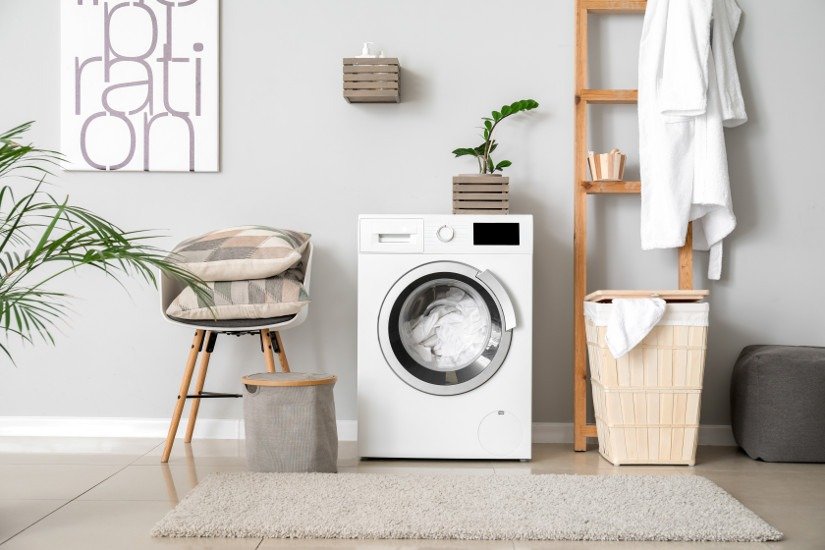With so many features and specifications to choose from, you are bound to find a washing machine that matches your needs. On the other hand, this incredible choice means that without careful research, you are likely to end up with something that is over complicated, the wrong size or just not right for you.
In this detailed guide, you will find everything you need to know before you buy, including explanations of complicated jargon and how to avoid common buyer mistakes. Whether your priority is load size, price, energy efficiency or special features, with this information, you will be fully prepared to select your ideal machine.
What capacity washing machine do I need?
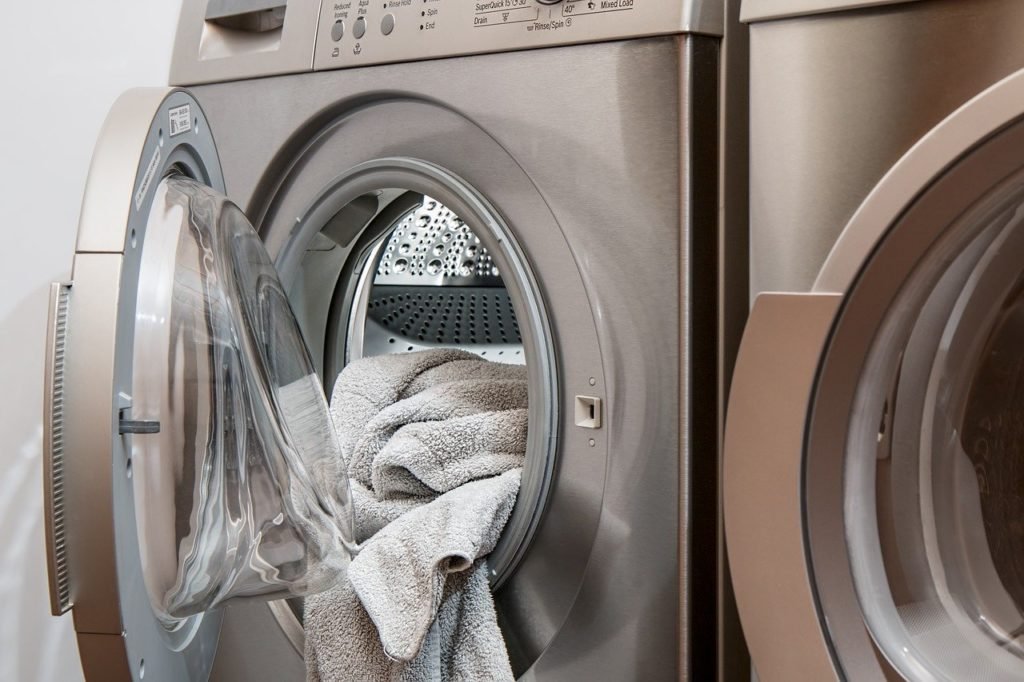
A larger drum capacity allows you to wash more items at one time. Washing machine capacity can range from 5kg to 12kg, which refers to the weight of dry clothes it can hold. If you have a large family, you will be looking for something at the higher end of the scale.
Most machines work best with heavier loads but shouldn’t be overfilled. Your washing machine will work more effectively and last longer if it is well matched to your regular load size.
Here are some example loads to help you estimate your ideal drum capacity for:
5kg
- Two pairs of men’s jeans, six shirts and one large hoodie = 5kg
- Eight large woolly jumpers = 5kg
- Two double duvet covers, four pillowcases and two double, fitted sheets = 5kg
7kg
- One double duvet = 7kg
- Thirty-five t-shirts =7kg
10kg
- Four pairs of men’s jeans, twelve shirts and two large hoodies = 10kg
- Twelve large bath towels = 10kg
12kg
- Six pairs men’s jeans, six large bath towels, six shirts and one large hoodie = 12kg
- Two double duvet covers, four pillowcases and two double fitted sheets, three pairs men’s jeans, six shirts and three large hoodies = 12kg
A machine with a 12kg drum will be more expensive than one with a smaller capacity. Also, the larger load size means that programmes may take longer and will use more electricity.
Some come with programmes specially designed for smaller loads. For example, those with a 6kg capacity may have a setting to allow you to do occasional 3kg loads.
Underloading
With most machines, an underloaded drum will use the same amount of water and power as one that is full. This can be wasteful, especially if done consistently over a long period. If you want to get the best from yours and run it efficiently, it should never be underloaded.
Overloading
An overloaded machine prevents your clothes from moving around the drum independently. Instead, they stay together in one ball, preventing the water and detergent from moving between each item.
This reduces the power of the wash, increases creasing and in some cases, can damage more delicate fabrics. Filling the drum to 80% with an air gap above the clothes should give you a full load at the drum designated capacity.
Some more advanced machines combat under and overloading with programmes that allow you to wash different sized loads:
Auto load sensing
Some washing machines have auto load sensing as an extra feature. This is a function that weighs every load and creates an appropriate program. This prevents waste and aims to give you the best results with every load, no matter its weight. If you know that you will need to use yours for loads of varying sizes, this is an excellent feature to have.
Key points of washing machine capacity:
- Bigger isn’t always better. The best drum capacity for you is one that best matches your usual load size.
- They work best when the drum is filled to its recommended maximum.
- If you want to use different load sizes, look for one with programmes for smaller loads.
- The bigger the size of the drum, the more expensive the machine and the more it will cost to run.
What program features should I look for?
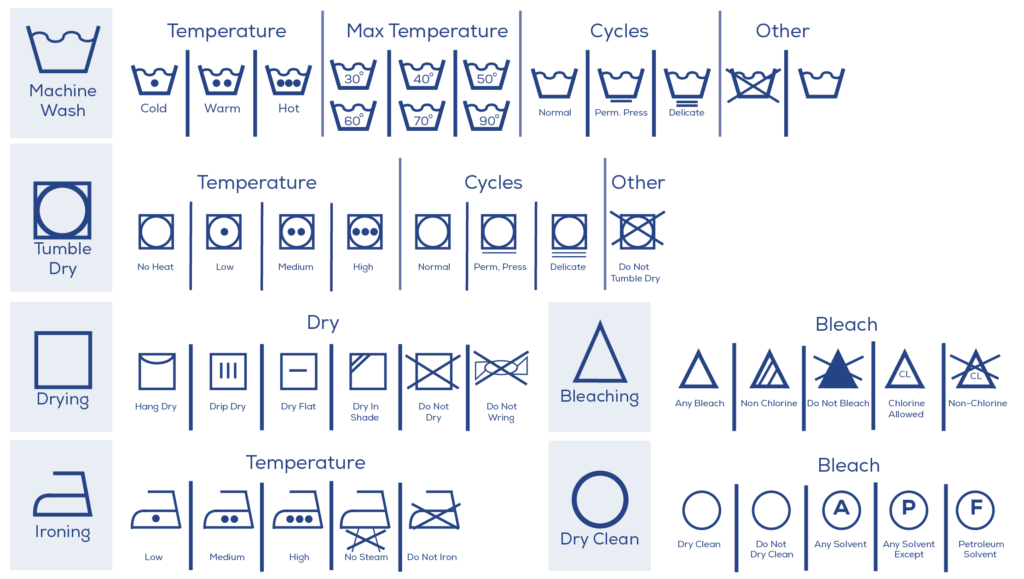
Standard washing machines come with preset programmes you can choose from depending on what you need. You can select from washes for materials like cotton, wool and synthetic fabrics. In addition, you can alter the spin speed and temperature.
While these are simple to operate and still common, it is now easy to find those equipped with sensors to tailor each wash automatically. These sensors provide information to create a unique program that gives precisely the correct amount of water and power. This makes them extra efficient, and some even go as far as to predict your energy usage.
Spin speed
The spin speed is how quickly your machine can rotate the drum to remove the water at the end of the washing program. Most can vary between 1,000 rpm to 1,400rpm, although some can reach 1,800rpm. While some believe the faster, the better, it depends on the model; some slower spins are more effective.
The spin cycle aims to remove as much water as possible so that your clothes take less time to dry thoroughly. Faster spins can generally be useful, but they are also noisier and use more electricity.
Quick Wash
A quick wash is a program included with all machines to allow you to revive clothes that aren’t very dirty. It works best for unstained clothes that need to be freshened up. In most cases, it runs through the full cycle but in a time reduced to between 10 and 40 minutes.
When buying a machine, it is always useful to check this program because occasionally they come with precise weight restrictions. With some, the quick wash is just shorter in length with others; you must also reduce the size of the load.
Temperature
Most modern machines offer temperature settings between 20˚C and 90˚C. This allows you to alter the temperature of most preset programmes depending on the items or what you need.
For example, a 20˚C wash is best if you want to save electricity or if you are washing brightly coloured clothes that are likely to run. An 80˚C wash is ideal if you want to kill germs and remove allergens.
If you work in a hospital ward or have young children, a hot wash will allow you to prevent any risk of infection via clothes effectively. Washing machines that come with a steam function can reach 100˚C and are great for deep stains and killing bacteria.
Extra programmes
Some machines come with extra programmes to give you better functionality for specific situations. This can include a program for particular materials, delicate clothing, tough stains or extra high-temperature washes.
If you often use yours for tough stains or specific types of material, it is worth finding a one with the corresponding capabilities. Some can pre-mix detergents for better stain removing, others alternate temperatures and spin speed to get different effects. Those with a steam function are great for loosening stains and dissolving the detergent to provide better cleaning power.
Delayed start and end
If you have one last wash to do, but it’s late in the evening, a delayed start will allow you to load your machine and program it to come on at a delayed time. It can then start first thing in the morning, and it will have a load ready to be hung on the line when you wake.
This is a handy feature for busy houses when you seem to have days where all the washing needs to be done at once. A delayed start allows you to specify when the next program begins; however, it is often more useful to set a delayed end. This means that you will know precisely when the cycle will finish.
What types of control panels are there?
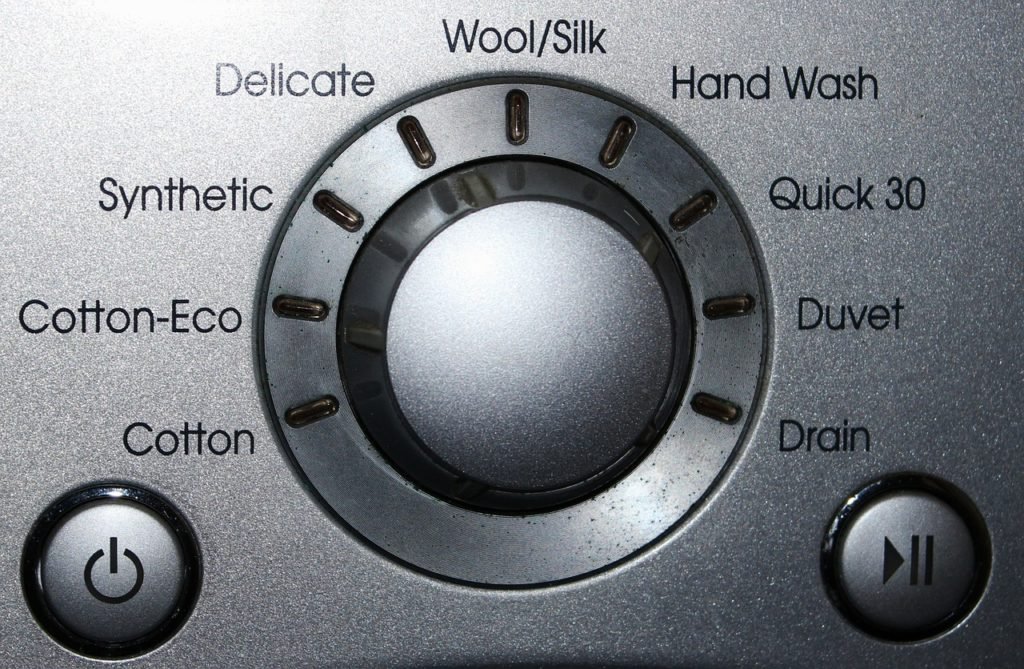
Washing machine control panels can vary significantly in their design, functionality and how easy they are to get to grips with. Some have a series of buttons and dials to allow you to select program and features. An increasing number of new machines have touch screens for easy selection of a growing range of options.
There is no right or wrong when it comes to a control panel; it’s just a matter of what works for you. Even the most basic models can take some getting used to so it’s worth finding one with a control panel that you find straightforward to operate.
Are some washing machines noisier than others?
Washing machines can vary widely in how much noise they make. Often those that are well-made run quieter and smoother than others, but this isn’t always the case. Most of them range between 40 and 80 decibels. For comparison, the hum of a refrigerator is about 40 decibels, and washing appliances that run at less than 60db are considered to be quiet.
Some people don’t mind the noise of a washing machine, but for others, it is a deal-breaker. If you use yours late in the evening or at night, a quieter model may be necessary. Newer ones have extra features added to reduce the noise even further. Making sure that it is on a firm flat surface and not touching surrounding surfaces will help keep the noise to a minimum.
The quiet mark is an officially recognised award given to machines that are particularly quiet when running.
Understanding the energy efficiency rating
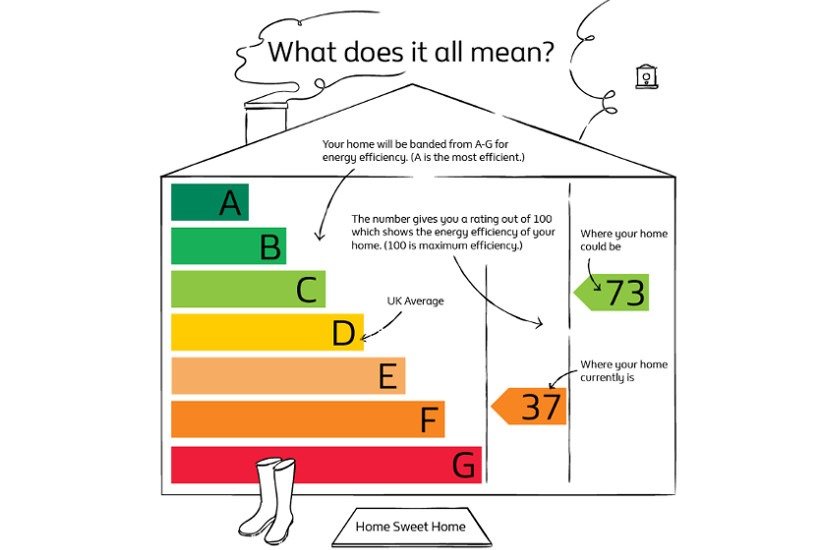
All household appliances are awarded an energy rating between A+++ (excellently energy efficient) and G (inefficient). Since 2014 washing machines can only be produced with a score between A+++ and A. This rating refers only to the amount of electricity used over a year when used on specific settings. These are usually a full 60°C cotton wash and a partial 40°C cotton wash.
As of March 2021 the old energy rating system was phased out and has been replaced with a much simpler range of classifications from A to G. This means that some machines that used to rate A+++ or A++ may now may fall as low as D or E. This doesn’t mean that they’re of low efficiency just that it’s become much harder to achieve the top rating.
Other energy-saving information, like water consumption and the efficiency of the spin cycle can be included on the energy information label. Still, manufacturers don’t take this into account when they calculate the rating. It’s always worth remembering that the rating is only accurate for the settings used for the calculations. If you use other settings, you will get different results.
What are the main types of washing machine?
Washing machines come in all shapes and sizes, but there are some standard features you can expect to see:
Free-standing
These are the most common style and give you the most choice of colour and design. They don’t require an existing cupboard so can be placed anywhere as long as there is an electric socket, a water supply and a wastewater connection.
A freestanding washing machine is always visible, so designers often make them look appealing. Some come in a range of colours with stylish features to fit a variety of kitchens and give an elegant appearance.
Integrated
An integrated machine is designed to fit into an existing cupboard in the kitchen or laundry room. They don’t have an external design or attractive panels because you can put them behind cupboard doors. This is a popular style, but they must be precisely measured and only fit certain styles of unit.
These are popular because you can hide them away. To get these advantages, they must be correctly measured and installed. The cupboards and doors must fit precisely to ensure an attractive finish and functional cupboard door.
Top-loading
Top loading machines give access to the drum from the top instead of from the front. They are an old style appliance and it’s hard to find any today. They are often more suited to larger loads, and you can still find them in launderettes.
Washer-dryers
These combine the functionality of both a washing machine and a tumble dryer. They are excellent if you need to fit both appliances into one space and to save money.
However, often the benefit of fitting two in one is cancelled out because when combined, neither appliance works as well as on its own. They can be more expensive to run, and in most cases, the drying program requires a smaller load than the wash program.
If you are limited for space, this is the style for you, but if not, you are better off choosing separate machines.
What is a smart washing machine?
Smart washing machines are a new advancement in automated technology that allows you more control from further away. They connect to your Wi-Fi and will enable you to control most of their functions and each program via a smartphone, an Alexa or a smart hub.
Not only do you have remote control of your machine, but smart appliances can include advanced features such as personalised programmes, power monitoring and auto load sensing.
Are expensive machines worth it?
You might think that buying a premium machine guarantees that you will be happy with your purchase. Some of the more expensive models have higher capacity, are more energy-efficient and have several extra modern features. While these may be great, we’ve found that buying one that matches your needs provides greater satisfaction than one with all the bells and whistles.
Despite how many fancy extra gadgets it has, if you don’t find it convenient to use, you won’t get the best from it. If you want to get the best top of the range machine for you, start by looking for one with controls you understand and programmes you know you will use.
Next, consider which features might make your life easier. If you buy one that has a fantastic fabric softening function, but your loads are mostly tough work clothes, then your money is better spent on something more appropriate. If you can afford it, premium machines can make your life easier but they are not essential to getting well cleaned clothes.
Although a hefty price tag may signify more capacity or better extras, the cost doesn’t guarantee quality. When buying a washing machine, take time to get to know it. Look at reviews for it and the company.
What to look for when you’re on a budget
When you are on a budget, you can still get a quality machine. Start by listing your priorities and what features you require. By having a clear idea of what you want, you won’t get sucked into buying a model with extras you don’t need.
Next look at customer review sites and consumer advice organisations. Look for recommendations of reliable energy-efficient machines. Once you’ve got a few suggestions, match them up against you list of required features. You can still expect energy efficiency and build quality at the budget end of the market, but you can do without extra program settings and super-fast spin cycles.
Safety Features
If you have children, you know how every item in your house can suddenly become a source of danger. Their inquisitive nature leads them to want to push every button and open every door. To prevent accidents, some machines feature extra security features:
Child lock
These can be activated once a wash has started and disables the buttons to stop little hands from changing the program or inexplicably hitting door opening sequence with one flick of their hand.
Door lock
These can be great, but they come with so many settings you need to check that it will work for your household. You can apply some at any time, and others engage when the wash program begins.
Leak shutoff
For me, this is essential; you never know when a clogged drain or broken pipe may cause a machine to overfill leaving you to return home and find the floor of the kitchen under 2 inches of water. Some models have sensors to detect leaks and take action to drain them or at least prevent them from getting worse.
Other features you may want to invest in including overheating shutoffs and anti-foam programmes to prevent problems caused by an excess of detergent.
Washing machine warranty 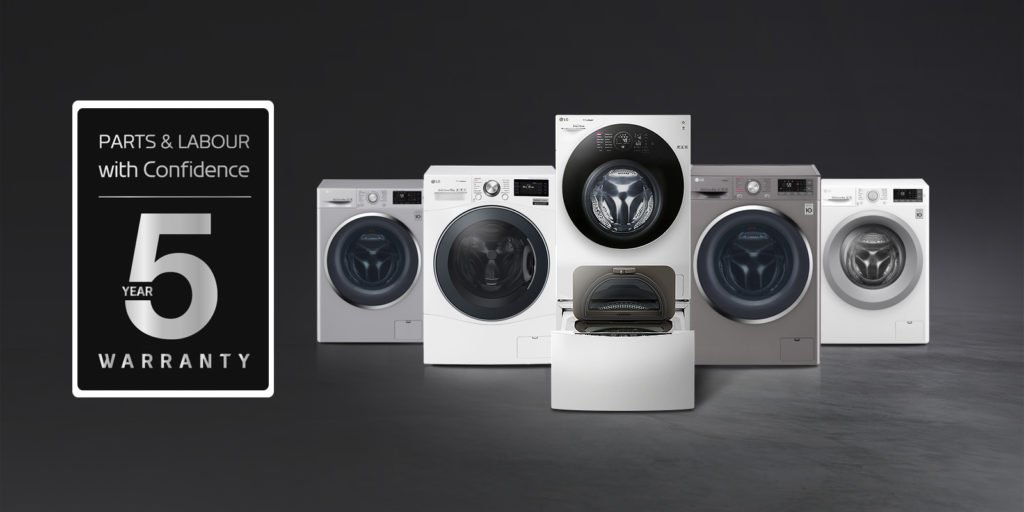
Most new machines come with a manufacturer’s warranty that will last for 1 or 2 years. They often offer optional extensions for an extra fee which can add an additional period of cover lasting between 3 and 8 years.
What does my washing machine warranty cover?
Most warranties cover you for mechanical or electrical breakdown during the allotted period. You must read the warranty carefully to ensure you know what is included and what is exempt as they can differ significantly from one company to the next.
Your warranty may not cover:
- If your machine breaks down as a result of the mains electricity supply, water supply or drainage, then it is likely that you will have to foot the bill yourself.
- Any damage to clothing caused by a washing machine fault.
- Problems that arise as a result of faulty installation.
How long should my washing machine last?
Washing machines can last between 6 and 12 years. Their lifespan can depend on several factors, including if it is appropriately installed, how often it is used and if it is regularly under or overused. Some companies recommend replacing machines that are older than eight years, but with the right care, they can last a lot longer.
Is it worth having my washing machine repaired?
Quality repairs that will extend the life of your washing machine can be well worth the money. A general rule of thumb is that repairs are only worthwhile if they cost less than a third of its price when new.
It is also essential to consider how old your machine is and how much longer you expect it to last. Some repairs can be expensive, and older devices may develop regular faults. In these instances, it is often preferable to get a new one.
Conclusion
There are lots to consider when buying a new machine. With some careful research, you can make the wide selection available work for you. Look carefully at the features and programmes of each machine and consider how it matches with your needs.
Whatever fancy features you’re offered, they’re worthless if you never use them. The most important things to get right are the capacity of the drum and the selection of programmes. Everything else is a bonus.
